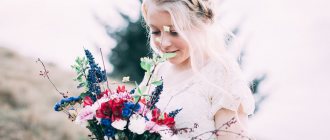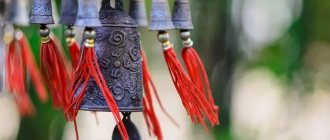According to the ancient Chinese teachings of Feng Shui, humanity should live in harmony with the surrounding world. And for this it is necessary to correctly distribute the places in the house. After all, the vital forces within us must interact well with the energy of the things around us. This distribution applies not only to interior design, but also to living plants. They need to be purchased with love, placed in appropriate places, and provided with care and attention.
Is it possible to keep indoor plants in the bedroom according to Feng Shui?
In general, experts in Eastern teachings do not recommend growing living plants in the bedroom, since their energy will mix with the energy of the owners of the house, and in the room where they sleep, this is considered unacceptable.
However, Feng Shui masters still met the flower lovers halfway and announced three rules.
- If you cannot imagine life without flowers and indoor plants, then place only a small number of them in the bedroom - no more than two pots or bouquets.
- Do not keep both living and “dead” plants in the bedroom, i.e. herbariums, dried bouquets. By the way, the latter have no place at all in the house, and not just in the bedroom - they spoil the energy of the home.
- If you prefer to place bouquets of fresh flowers by your bed, make sure they are fresh - as soon as they begin to fade, throw them away immediately before they negatively affect your health.
Flowers in the bedroom according to Feng Shui: an overview of the most popular types
Since we have found out that small quantities of fresh flowers in the bedroom will be appropriate, let’s talk about their most popular types, because, as you know, each flower has a different effect on the energy of the home and the well-being of household members.
We hasten to disappoint orchid lovers. This beautiful plant, unfortunately, is completely unsuitable for the bedroom. Feng Shui masters claim that orchids interfere with a person’s restful sleep: their strong smell can cause headaches and insomnia. And if there are a lot of orchids in the room, then they can generally lead to depression and a chronic feeling of fatigue.
According to Feng Shui, an orchid in the bedroom is extremely contraindicated for single people. For married couples, the danger is somewhat reduced, but, nevertheless, if the smell of a flower irritates one of the spouses, it is better to refuse to place such a plant in the bedroom.
Poppies are considered a favorable symbol, but only if they are alive and not dried. It is worth paying attention to the area in which your bedroom is located. According to Feng Shui, it is best to place scarlet poppies in the south of the apartment if the bedroom is located in this part of the house, since this is a fire zone and its main color is red.
However, if your bedroom is located in a different direction, you can simply determine the southernmost corner of the room and place a vase of poppies there. The only thing is that poppies should be avoided if the bedroom is located in the north - Water reigns there, at war with Fire, so such flowers will disrupt the harmony of space. If you want to hang a picture with red poppies in the bedroom, then this can also be done, following the same rules as for fresh flowers.
Roses in the bedroom according to feng shui
A bouquet of fresh roses can significantly improve relations between spouses. If the passion in your couple has cooled down, just put such a bouquet on the bedside table. It is better if the flowers themselves are pink or red, but not yellow.
The same applies to a live rose in a pot. You can safely place it according to Feng Shui in the bedroom. But don’t even think about dried flowers!
Peonies in the bedroom according to feng shui
Peonies are considered flowers to attract love and good luck, so placing them in the home is highly desirable. However, it is not recommended to place a painting with these flowers or live peonies in the bedroom according to Feng Shui: it is better to place them in front of the entrance to this room - this way their influence will be stronger and more harmonious for the space.
Yang includes:
cherry, willow, chrysanthemum, maple, acacia, peony, peach, bamboo, orchid.
Yin includes:
grapes, pear, banana.
All plants belong to the Tree. Yellow flowers add Earth to the balance of the elements. White – Metal. Blue - Water. Red - Fire.
Taking this into account, a combination of blue and white colors will be favorable. Red flowers should be added to yellow ones. If you have a yellow-blue flowerbed (a destructive combination of water and earth), then it needs to be given a round shape (Metal), this will neutralize the conflict of elements.
What indoor plants are suitable for the bedroom according to Feng Shui?
Despite existing restrictions, there are several types of plants that can be safely kept in the bedroom. First of all, it is chlorophytum, which acts as an antidote for the home, purifying the air from harmful substances and bacteria. Another suitable option is geranium, which saturates the air with ozone and has a beneficial effect on hormonal levels in women.
You can also place spathiphyllum in the bedroom, which absorbs harmful substances from the street. It is better to place it directly on the windowsill. Begonia will not do any harm either - the list of its beneficial properties includes relieving depression and treating various diseases. Begonia is indispensable in the bedroom of older people.
And one more plant that would be appropriate is Sansevieria. If an orchid in the bedroom, according to Feng Shui, permeates the air with a heavy smell, then “mother-in-law’s tongue” (the second name of this plant) produces oxygen at night, providing sleepers with a restful sleep and excellent well-being in the morning.
FLOWERS and FENG SHUI
- laws of ancient Chinese science. Feng Shui - translated as "wind - water", natural elements that have vitality and energy. In Eastern philosophy, this life force is called qi.
Ancient Chinese tradition prescribed that every educated person should know seven arts, one of which was floriculture. Flowers can not only improve a person’s mood, but also their energy. Any room without indoor plants seems cold and unwelcoming to us. Plants purify the air and fill the home with vital energy.
The green color of plants is one of the most natural. Finding ourselves next to plants and flowers after a hard day, we calm down and feel how our mood changes. The plant pleases us with its greenery and flowers. We love seeing greenery decorating modern interiors.
According to the laws of the ancient Chinese science of Feng Shui, based on the study of the influence of the life-giving energy of nature on health, well-being and prosperity, it is better to give preference to flowers with round leaves. To activate positive forces, purchase plants that grow upward. Plants with drooping leaves ground energy.
Some cultures even improve well-being. These include the money tree and the common crassula - a symbol of material well-being. Its thick leathery leaves look like coins. According to the laws of Feng Shui, the cactus is considered a symbol of filling, since it economically consumes moisture and is considered a storehouse of accumulation. The cactus pacifies the spontaneous flows of energy. It can be placed in the wealth sector.
Royal begonia is a symbol of material well-being. In addition, it removes toxic substances from the air. The myrtle tree is the key to a happy marriage and well-being in the family. Blooming myrtle creates especially favorable energy. If desired, you can grow it at home. Lemon tree speeds up recovery. Lemon, which releases phytoncidal substances, will make you healthier just by its presence in the house.
An indoor rose creates circular flows of positive energy, filling the entire space with it. Yellow and purple roses are considered generators of positive energy “chi”. But rose bushes are quite capricious. Like any queen, the rose does not like being next to other flowers.
It is very good when a real rose grows in the house. But only one. And not in the bedroom. Because many roses give off an ocean of sweet aroma that can turn into a dope that is destructive to humans. Rosaries are good only in the open air. But keeping a Chinese rose in the house is not very good - it can “drain” a person’s energy.
Chlorophytum is a natural conditioner that can transform negative energy into positive. When moving to a new apartment, it is recommended to purchase this flower first. If chlorophytum settles in your home, the number of harmful microorganisms will be reduced; it takes root best in the kitchen.
It is advisable to choose a plant that releases oxygen at night: aloe, sansevieria, kalanchoe. Aloe, saxifraga, and Kalanchoe will help cope with ailments. Aloe is very good to have in a house where there are people with chronic diseases, weakened people or people with a weak biofield. Aloe increases and cleanses the overall energy of the atmosphere, protects everyone from precisely the illness that really threatens them. In a house where there is aloe, people get sick less and recover faster. If you wish someone well, give them a pot of aloe.
Ficus has always been one of the most beloved house plants. It perfectly extinguishes negative energy, aggression, and creates a favorable atmosphere in the house, but the attitude of the spouses may worsen if it is in the marriage sector. Sansevieria is able to neutralize harmful substances and bacteria.
Geranium blooms magnificently, fueled by negative energy. Indoor geranium (pelargonium) is a plant with powerful energy. According to Feng Shui, this flower perfectly protects the owners of the house. It is enough to sit near it for a few minutes, you can feel rested and gain strength. This plant releases essential oils, improves metabolism, purifies the air, calms the nerves and reduces blood pressure. But it is not recommended to place geraniums next to the bed. If you inhale essential oils for a long time, you may get a headache; its smell sometimes causes allergies.
Some plants, according to Feng Shui, are not suitable for residential premises and are better kept in offices. Such plants include monstera, diefenbachia, poinsettia, and fern. In no case do I encourage you to give up your favorite plants, you just need to find a suitable place for them, for example, in your office or living room. It is believed that bonsai are not for the home
. After all, when growing them, the natural harmony of growth is disrupted. In the office there will be no particular harm from such a plant.
Monstera is a complex flower and it is better to place it in spacious rooms. She is good in the office, if, of course, she is in the partnership sector, but at home she belongs in the common room (living room, office...), in no case can she grow in the bedroom. It is advisable to immediately choose a permanent place for it and not move it again after you bring it into the house. She feels great next to the microwave and electric stove. If you spend a lot of time at the computer, place a monstera next to it as a permanent wireless vacuum cleaner for negative energy emissions. Perhaps Monstera is the only plant in the company of which other indoor crops are unlikely to grow.
Dieffenbachia is good for people engaged in mental work and those who spend their lives at a desk. Activates both hemispheres of the brain, helps with cerebral circulatory disorders. Ideally, if it is placed in the northeastern sector, where your office or workplace is located, then creativity is guaranteed to you. Neutralizes harmful substances... Don't be alarmed if your Dieffenbachia "cries" one day. After all, she is a barometer plant, so she sheds “tears” before the rain, when the pressure drops. And you don't need to do anything with it.
Creepers symbolize loneliness; it is especially not recommended to keep such plants in the bedroom. Buy plants that grow upward. Be careful with lilies and ferns: they are dangerous to health, as they actively absorb oxygen at night, releasing carbon dioxide. If you leave a lily or lilac in the room overnight, then by the morning sensitive people may have a headache. Feng Shui classifies dried plants as energy vampires.
Scientists have proven that plants are able to respond to harmful electromagnetic fields or disharmony in the energy of the room. At the same time, they grow poorly and get sick. If, even with good care, the plants begin to get sick, this indicates that the owners may get sick. Such plants include primarily tradescantia, ivy and liana. At the slightest imbalance, they will signal this with yellowed leaves or crumbling crowns. These plants absorb not only negative energy, but also electromagnetic radiation from household electrical appliances.
According to their energy characteristics, indoor plants come with male “yang” and female “yin” energy.
- The “yang” group includes the most famous: chlorophytum, dracaena, sansevieria, asparagus, lemon and other citrus fruits. If you want proper Feng Shui in your home, it is better to keep Yang plants in rooms with a predominance of masculine energy, for example, in the living room or study. In addition, if the room occupies the southeast, south or southwest sectors, then “yang” plants will be simply necessary here.
- The “yin” group includes: Crassula (money tree), begonia, cyclamen, violet. Yin plants are suitable for kitchens and children's rooms. Feng Shui experts advise choosing small plants for these rooms.
To create harmony and energetic balance, you need to keep both Yin and Yang plants at home. There should not be too many indoor plants in the bedroom, and they should not be too close to the bed.
Bamboo will absorb negative energy. Bamboo sticks are excellent neutralizers of negative energy. According to the teachings of Feng Shui, negative energy passes through the cavities of bamboo and changes the sign “minus” to “plus”. It is useful to keep the plant in a wide floor vase in the corner of the room.
Rosehip gives well-being. There is a popular belief that if you surround a house with rosehip bushes, then there will always be peace and prosperity in it. Rose hips have the property of converting negative energy into positive energy, which is why it has long been planted near the windows of the house. The smell of rose hips during flowering is very useful; it fills us with pure energy.
We all love to embroider. Some people like landscapes, some like houses, some like to embroider flowers, and some like animals... But not everyone thinks about what this or that picture we embroidered means. According to the ancient Chinese teachings of Feng Shui, every thing in the house, including an embroidered picture, can bring love, happiness, harmony to this house, or, conversely, can be the cause of failure, ruin and infidelity of spouses. Let's figure out together where it is better to place our masterpieces so that they please the eye and contribute to our success and prosperity.
What types of house flora are best not to keep at home?
Chinese folk teaching also talks about plants such as “bloodsucking plants,” which include exclusively prickly representatives of the green world. To prevent them from causing harm, they are placed near computers or on the windowsill.
In addition to everything, dried and wilted flowers in the house according to Feng Shui absorb the vital energy of Qi and are spreaders of germs! If you see a wilting flower at home, the shoot should be cut off and all remaining parts thrown away.
In addition, do not bring home flowers that were given to you by people with heavy energy. Since their aura can negatively affect the home atmosphere and the well-being of household members.
These plants should not be kept at home!
Dieffenbachia
This plant is beautiful, with its juice, which, unfortunately, is not beneficial for people, but on the contrary can cause irritation on the skin or burn the retina. It should not be kept indoors, especially for those who have small children. Because if a large amount of juice gets into your mouth, a severe burn may occur.
Oleander
A flowering plant that smells strongly while in bloom may even cause you to faint. Just like Dieffenbachia, its juice can cause blindness due to a mucus burn. Other green friends of the plant have similar effects: Pachypodium, Dipladenia, Periwinkle, Adenium.
Monstera
One of the bright and frightening vampire plants. The monster needs, even needs to evoke fear, horror, and simply attract attention. This plant “feeds” on strong emotions and feelings. The plant is endowed with both disadvantages and advantages: it perfectly cleans the air of dust and carbon dioxide, and releases oxygen. But it also takes energy away from people. Therefore, florists advise storing the plant for those people who are phlegmatic and melancholic. Temperamental choleric people, on the contrary, will have a hard time next to a monstera. After all, they lose their peculiarity by splashing out energy on others. Therefore, it is better for impressionable and often sick people to keep other plants at home.
Fern
Ferns are “guests” from tropical countries. These beautiful green inhabitants are popular in our latitudes. Ferns are one of the strongest energy absorbers. Like Monstera, it absorbs human energy.
Hibiscus
Hibiscus is considered a vampire plant that absorbs energy with lightning speed. This is due to the fact that the plant grows very quickly. And it is also at the moment of flowering that hibiscus consumes maximum energy. But it is worth noting that Hibiscus will certainly attract everyone’s attention with its lush and beautiful flowering.
Thuja
Popular garden flower. In the room, Tuya absorbs all the energy entirely. Lethargy and drowsiness can become your eternal companions. I don't think you would keep such a plant at home.
Shy Mimosa
A strange plant, with a thin stem and small leaves. The leaves of this plant are fragile, and if you touch the leaves with your hand, they supposedly hide and curl into a tube. Fear! With prolonged contact with Mimosa, you can lose your hair.
Ivy evergreen
Poisonous berry plant from the Araliaceae family. Looks like a vine bush. Due to the toxicity of the fruit, it is not recommended to keep this green plant at home.
Adenium
It looks like a beautiful plant. It has thick stems. At the very top of the plant there are thin leaves and pink flowers. Its juice is harmful and toxic, and poisoning of the body can occur.
Croton
From the Euphorbiaceae family. An elongated small tree with spotted leaves. Its petals are invisible, and it blooms extremely rarely. The liquid of this plant provokes the appearance of skin diseases. The poison, once in the blood, can be fatal.
Philodendron
From the Araceae family. Philodendron has lush greenery. Echidous, like Croton. It is advisable not to come into contact with this toxic substance, as it can cause blindness.
Stellera dwarf
A medicinal flower that should be used under the supervision of a specialist. A tall stem, which consists of twenty or thirty dotted spots of white color. Once in the human body, it can deprive the voice.
Nightshade
Flower with bright orange fruit. These fruits are extremely evil and dangerous to humanity. The bright color of the berries attracts the attention of children and pets, which is precisely why you should not keep such a flower at home.
Trichocereus
A relative of the cactus, as it is very similar in appearance to it. External description: long and large needles, blooms with large light flowers, also smells pleasant. Trichocereus contains toxins that can paralyze nerve endings.
Gesner Tulip
A well-flowering plant with a medium-sized stem. There is a small flower in the center. The color can be varied, ranging from light tones to variegated and bright. One of the disadvantages is hair loss and baldness.
Tuberose
A perennial plant whose stem reaches a height of almost 50 cm. It has a strong and sweet smell. Tuberose subdivides microelements that enhance the sense of smell. This power of the plant is also used in medicine. As it turned out, foreign doctors used the flower as a medicine when patients lost their sense of smell due to nerve problems. It is not advisable for anyone with heart problems to have this flower in their home. The aroma of this plant can cause weakness and loss of energy.
Sansevieria
The plant is very interesting in appearance, one might even say strange? Something like the tail of a fish. For this reason, it has a second name, “pike tail”. The green flora blooms and has a delicious aroma. It has a beneficial effect on the clean air of the house, as well as on its aura. However, if you believe ancient and ancient signs, it has a bad effect on personal life, and the owners may remain alone for the rest of their lives.
Your dream home
HOUSE will help you buy a house, cottage, or apartment
. The house can be of any size, but it is still recommended to embroider the kind of house in which you would like to live. For some, this is a cozy house in the village, surrounded by flowers and trees, and for others, a luxurious mansion. Any building will help improve living conditions. But the basic principle of Feng Shui says: all thoughts materialize, what you strive for is what you get. Therefore, every time you look at the house of your dreams, you will experience positive emotions and get closer to your cherished goal. It is best to place this painting in the living room in a visible, well-lit place or in the south-eastern part of the house (in the “Wealth” sector).
Career
Everything that has to do with work, career, and increasing earnings is presented in this sector, located in the north.
- TURTLE
is the most common talisman for the Career zone. The turtle is a symbol of heavenly support and protection, as well as wisdom and longevity; it brings money and support from useful people. - UNDERWATER WORLD
,
LANDSCAPES
depicting
the SEA, LAKE, RIVER, WATERFALL
or
FISH
,
ANY WATER MOTIF
is considered favorable in the northern part of the house, but they can also be placed in the study (office), but
not behind the back
of the worker. And it is important to take into account the ban on “water” paintings in the bedroom, they can ruin romantic luck. - LANDSCAPE
depicting
MOUNTAINS, TREES
is recommended to be placed
behind the back
of a person working in a house, office or office, since the mountain will provide solid support in business and business.
Glory
The Glory sector is located in the south, it supports you as an individual, helps you achieve success and recognition in society, as well as strengthen your reputation at work and achieve fame or even fame in your field.
- PHOENIX
bird is a traditional talisman for the Glory zone. Phoenix very effectively activates the energy of prosperity, fame and success. - The image of the Phoenix can be replaced by the image of the ROOSTER
, personifying wide fame and good fame. - A picture with an embroidered PEACOCK
can also become an excellent talisman that attracts good luck and success. - The EAGLE
, proudly soaring in the skies, will help those who are ambitious and want to achieve a lot in life. - A HORSE
, directed upward, symbolizes speed and endurance, bringing with it the wind of change and favorable changes in life. - Images of FIRE
(hearth, fireplace, burning candle, bonfire, etc.),
RISING SUN
, blooming
SUNFLOWERS
will become very effective activators of fiery energy, and this is the place for them in the southern sector of your home! - As well as RED POPPIES
and
TULIPS
, symbolizing pleasure and success.
Tulips: a symbol of pure and devoted love
In order for true and pure love to appear in your life, you need to put tulips in your house. It could be freshly cut flowers or a picture of tulips. In any case, the most suitable room for this is the bedroom or living room. They can also be placed in the southern sector.
Red tulips can increase the fame of people with their energy, attracting fame and fortune to him. But yellow tulips (despite their sad fame) are a symbol of friendship, as well as the sun. White flowers symbolize purity and innocence, as well as forgiveness. The most suitable place for planting tulips in the garden is the eastern or southwestern sector.
Helpers and travel
This is the name of the zone located in the northwestern part of the house. It is considered traditional to place in this zone portraits of people whom we consider our heavenly and/or earthly helpers:
- paintings depicting saints
whom you especially reverence, as well as
ICONS - paintings with ANGELS
- portraits of your REAL FRIENDS
, it may happen that you want to embroider a picture from a photograph of your friend or girlfriend











